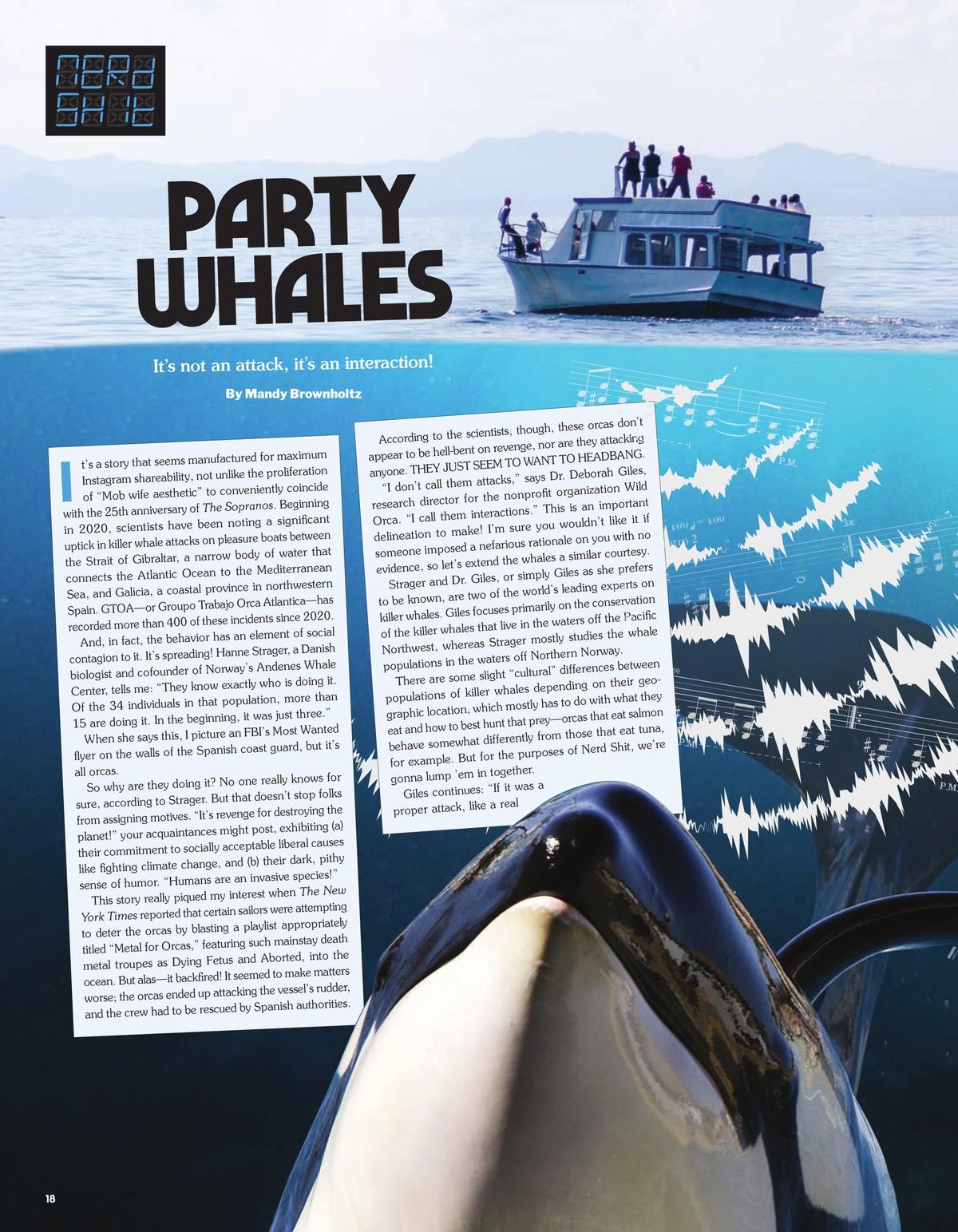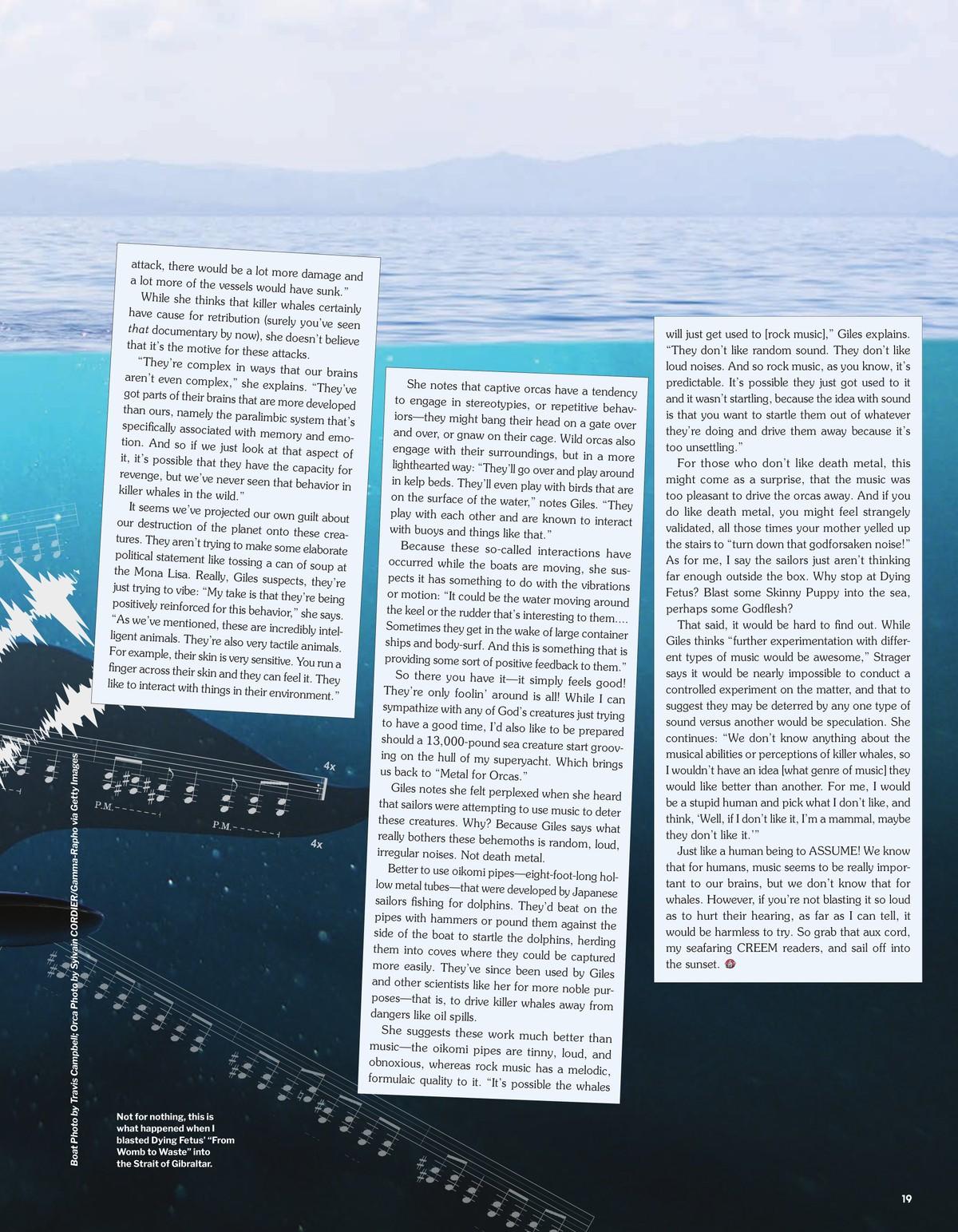NERD SHIT
PARTY WHALES
It’s not an attack, it’s an interaction!


It’s a story that seems manufactured for maximum Instagram shareability, not unlike the proliferation of “Mob wife aesthetic” to conveniently coincide with the 25th anniversary of The Sopranos. Beginning in 2020, scientists have been noting a significant uptick in killer whale attacks on pleasure boats between the Strait of Gibraltar, a narrow body of water that connects the Atlantic Ocean to the Mediterranean Sea, and Galicia, a coastal province in northwestern Spain. GTOA—or Groupo Trabajo Orca Atlantica—has recorded more than 400 of these incidents since 2020.
And, in fact, the behavior has an element of social contagion to it. It’s spreading! Hanne Strager, a Danish biologist and cofounder of Norway’s Andenes Whale Center, tells me: “They know exactly who is doing it. Of the 34 individuals in that population, more than 15 are doing it. In the beginning, it was just three.”
When she says this, I picture an FBI’s Most Wanted flyer on the walls of the Spanish coast guard, but it’s all orcas.

